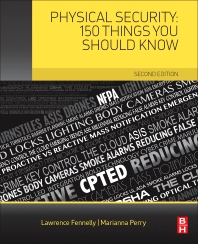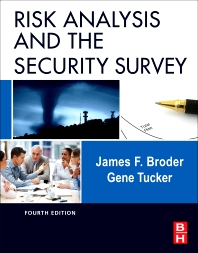Security dealer Sonitrol of Indianapolis used to install a lot of photoelectric beams for protecting the perimeter of commercial installations, but today the company relies exclusively on a wireless camera system for perimeter protection. As Sonitrol of Indianapolis Sales Manager, Mike McCalip, explains, the company uses the Videofied camera from St. Paul, Minn.-based RSI Video Technologies, which has its own power source, eliminating the need to trench for wires. The product also helps prevent false alarms because it sends a video clip to the central station when its internal motion detector senses a potential intruder. Central station personnel then can view the clip and determine whether the situation is a real emergency.
Compass Tech Systems, a security dealer based in Jacksonville, Fla., used to use alarmed fences for its perimeter installations. The fences had sensors every so many feet, making installation labor-intensive, notes David Sims, vice president for Compass Tech Systems. The sensors also were vulnerable to false alarms. For today’s perimeter jobs, Compass Tech Systems virtually always installs video cameras in combination with video analytic software from St. Louis-based Arteco Vision Systems that can be fine-tuned to trip only when they detect certain types of motion, depending on the customer’s needs.
A golf course system, for example, might alarm if the camera perceives that an animal is staying in one place for a certain period of time, indicating that it may be digging up the finely manicured green.
Are these dealers typical and if so, are traditional perimeter sensors set to become a thing of the past? In this article, we look at how advances in video technology have changed the way dealers and integrators approach perimeter protection — and we explore whether there still will be a need in the future for traditional forms of perimeter protection such as fence sensors and outdoor motion detectors.
Advances in video technology that have impacted the perimeter protection market include video verification and video analytics, as well as developments in megapixel cameras, thermal imaging cameras, and infrared illumination that have made these options more affordable than they were in the past.
The great thing about video verification, according to McCalip, is that it can catch intruders in the act. He cites the example of a landscape company client that had tires stolen from its service vehicles. Central station operators caught the perpetrators on video and dispatched the police, who made an arrest.
Some clients bank on the fact that they will be able to review recorded video after an incident, but often they do not recognize the criminal, McCalip notes. “The best chance of catching someone is to catch him in the act,” observes McCalip.
It’s worth noting that Sonitrol of Indianapolis only uses video for protecting areas that are fenced in, which suggests that internal motion detection and video verification alone may not provide sufficient protection in all situations. An alternative approach is to use a camera such as the one from RSI Technologies in combination with a megapixel or PTZ camera that can be controlled by central station operators, advises RSI President Keith Jentoft. “We end up being the scout doing the detecting, making sure something is there and being an alerting engine to more powerful cameras,” Jentoft describes.
The Arteco video analytic system that Compass Tech Systems uses also supports video verification, which is triggered by trip zones set up by installers, Sims explains. When a trip occurs, personnel monitoring the site can use megapixel cameras and cameras with wide fields of view to check in on the site.
“With an 8-megapixel camera you can see out up to 800 feet and zoom in and say, ‘That’s so-and-so,’” Sims comments.
Megapixel cameras have come down a lot in price in recent years, making their use, in combination with video analytics, a cost-effective alternative to the fence systems that Compass Tech Systems used previously, Sims says.
One drawback to video cameras, however, is that they don’t work well in total darkness. A good video camera will be suitable for perimeter protection when there is at least some light, explains Kostas Mellos of Interlogix, part of United Technologies Corp.’s Climate, Controls & Security unit. But in some unlighted areas, an installing company may prefer to use one of two other options, observes Mellos, sales leader for video and transmission for the Bradenton, Fla.-based manufacturer. These include thermal imaging systems and infrared illuminators — two technologies that have become more affordable in recent years.
A thermal imager “sees different wavelengths of light than a visual camera,” explains Andy Teich, president of Wilsonville, Ore.-based thermal imagining manufacturer FLIR. “It sees heat instead of light.”
The benefit for perimeter protection, he says, is that the system can see in total darkness. The downside is that the thermal imager does not capture a traditional visual image of an intruder. “It’s not good at identification,” Teich admits.
For that reason, some dealers install thermal imagers in combination with traditional cameras and provide a lighting source that is turned on only when a potential intruder is detected during the nighttime.
Another option for customers who want to capture images of nighttime intruders in darkened areas is infrared illumination. As Willem Ryan, senior product marketing manager for video systems for Fairport, N.Y.-based Bosch Security Systems explains, infrared illumination is “invisible to the human eye but seen by all day/night cameras with a removable mechanical IR filter” and “provides recognition and identification-level surveillance in complete darkness.”
The downside to infrared illumination, Ryan explains, is that it can be detected by an intruder who has night vision goggles. In addition, its range is less than the 800 feet or so available with some thermal imaging systems.
But despite the added flexibility that all of these video technologies can provide, several people interviewed for this article contend that video alone cannot address every perimeter installation.
“The best perimeter protection systems have layers of security measures that overlap and back each other up, combining video, intrusion, physical and even audio technologies,” Ryan states.
Another concern is that video can be costly for large installations that require numerous cameras. One way to minimize the number of cameras needed is to use a long-range motion detector to control a single pan-tilt-zoom camera, automatically adjusting it to pre-configured settings, notes Steve Birkmeier, vice president of sales for Arteco Vision Systems.
Manufacturers of conventional outdoor sensors say their sales have not been impacted by the increased use of video in perimeter protection. Kevin Piel, senior product marketing manager for Melville, N.Y.-based manufacturer Honeywell, sees a role for both video and traditional outdoor sensors in perimeter protection moving forward.
“Sensors are agnostic to whether it’s day or night,” notes Piel. Sensors also may require less maintenance and can be easier to install. He notes, for example, that Honeywell recently introduced a wireless contact designed specifically for outdoor use that helps minimize installation time. And despite price decreases in video, traditional sensors may be less costly — particularly for larger installations, Piel says.
Jason Quam, vice president for Elk Point, S.D.-based manufacturer Dakota Alert, sees his outdoor motion detectors as “complementary” to video for perimeter protection. For example, he notes that the detectors can be connected via a relay output to a digital video recorder to trigger recording from a video camera when a potential intruder is detected.
Outdoor sensors and fence systems also are likely to play an ongoing role for certain specific applications. For example, Columbia, S.C.-based manufacturer and integrator Electric Guard Dog pitches its fence system as an excellent option for high-crime areas where customers would rather deter criminals than catch them. The company’s fence uses pulsed electricity to give would-be intruders a “safe but memorable” shock, explains Electric Guard Dog CEO, Jack DeMao. The offering is considerably less costly than using a human guard and DeMao says that an independent study found that 95 percent of customers said it stops crime.
Another specialty sensor comes from Branson, Mo.-based manufacturer Nedap. The company offers wireless RFID technology designed for use specifically with access control systems. As Craig Wilson, marketing and public relations director for Nedap explains, a trucking company might equip its vehicles with the technology to permit access through a gate system. Alternatively, a hospital might equip gurneys with the devices to enable emergency room doors to open when a patient is wheeled in, while preventing unauthorized people from gaining entry.
Nedap is also in the video camera business, but here, too, it manufactures a specialty device — a camera designed specifically to record license plate numbers over distances up to 30 feet. This is typically used with access control — for example, to record the license plates of all visitors entering a business customer’s parking lot.
















